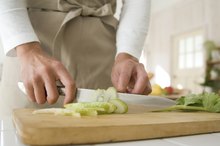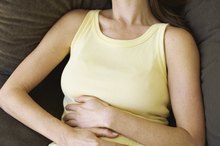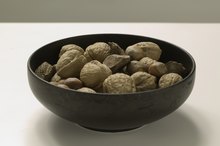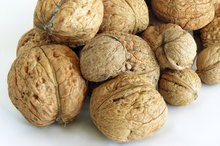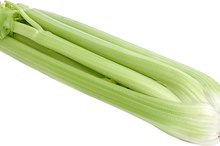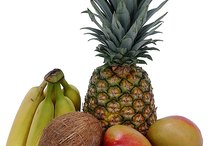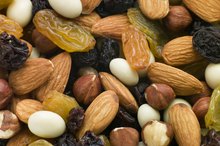What does fact checked mean?
At Healthfully, we strive to deliver objective content that is accurate and up-to-date. Our team periodically reviews articles in order to ensure content quality. The sources cited below consist of evidence from peer-reviewed journals, prominent medical organizations, academic associations, and government data.
- National Institute of Diabetes and Digestive and Kidney Disease: Diverticulosis and Diverticulitis
- Mayo Clinic: Diverticulitis Diet
The information contained on this site is for informational purposes only, and should not be used as a substitute for the advice of a professional health care provider. Please check with the appropriate physician regarding health questions and concerns. Although we strive to deliver accurate and up-to-date information, no guarantee to that effect is made.
Can You Eat Celery & Almonds If You Have Diverticulosis?
If you’re one of the 10 percent of Americans over the age of 40 with diverticulosis, dietary recommendations can seem confusing at times. Diverticular disease has two phases: chronic diverticulosis that causes small, bulging pouches along the inner lining of your colon, and diverticulitis, an acute problem that develops when those pouches become inflamed or infected 1. Your doctor may advise you to eat fiber-rich foods such as celery and almonds to control some phases of your disease, but to avoid those foods at other times.
Causes
Most health care experts believe diverticular disease is caused by a diet lacking in fiber, according to the National Institute of Diabetes and Digestive and Kidney Diseases. Diverticulosis was first identified in the early 20th century, when Americans began eating more processed, low-fiber foods. When your bowel movements are hard and small, you may have to strain to pass them through your intestines and out of your body. Fiber from celery, almonds and other plant foods binds with water in your intestines to create softer, larger stools that travel more easily through your colon. You don’t need to strain as much, so you don’t create diverticular pouches or irritate the pouches if you already have diverticulosis.
- Most health care experts believe diverticular disease is caused by a diet lacking in fiber, according to the National Institute of Diabetes and Digestive and Kidney Diseases.
- You don’t need to strain as much, so you don’t create diverticular pouches or irritate the pouches if you already have diverticulosis.
Changes in Diet
Can You Eat Celery & Blueberries If You Have Diverticulosis?
Learn More
Your health care provider is likely to advise you to eat plenty of high-fiber foods when your diverticulosis is under good control. A high-fiber diet helps reduce the symptoms of diverticulosis and limits the frequency of diverticulitis attacks 1. If you develop the abdominal pain, nausea, vomiting, chills and fever associated with diverticulitis, however, your doctor may advise you to drink only clear liquids for two to three days 1. Once you’re feeling a bit better, you can start adding small amounts of low-fiber foods back into your meals. Stay away from celery, almonds and other high-fiber foods until your diverticulitis has cleared up completely, Mayo Clinic advises 1.
Fiber Content
A 1-cup serving of chopped celery has about 1.6 g of fiber in only 16 calories, while a 11- to 12-inch long celery stalk contains 1 g of fiber in 10 calories. A cup of sliced almonds contains 11.2 g of fiber, but also packs 529 calories. A single ounce of almonds, or about 23 whole kernels, has 3.5 g of fiber in 163 calories. Create a high-fiber, low-calorie salad by combining a large chopped celery stalk with a small, chopped, unpeeled apple that offers 3.6 of fiber in only 77 calories. Toss 1 oz. of sliced almonds on top, along with a medium chopped fig for an additional 1.4 g of fiber in only 37 calories. This salad delivers 9.5 g of fiber but only 287 calories.
- A 1-cup serving of chopped celery has about 1.6 g of fiber in only 16 calories, while a 11- to 12-inch long celery stalk contains 1 g of fiber in 10 calories.
Misconceptions
Can Sesame Seeds Cause Diverticulitis?
Learn More
For many years, individuals with diverticulosis have been told to avoid nuts, seeds and stringy foods like celery because doctors thought these products would get stuck in the diverticular pouches and cause more symptoms. Today, however, the National Institute of Diabetes and Digestive and Kidney Diseases states you don’t need to avoid any particular foods during the chronic phase of diverticulosis. If you believe celery, almonds or other specific foods worsen your symptoms, let your doctor know.
Related Articles
References
- Mayo Clinic: Diverticulitis Diet
- U.S. Department of Agriculture: National Nutrient Database: Celery, Almond, Apple, Fig
- Drugs.com: Low-Fiber Diet
- Granlund J, Svensson T, Olén O, et al. The genetic influence on diverticular disease--a twin study. Aliment Pharmacol Ther. 2012;35(9):1103-7.
- Peery AF, Barrett PR, Park D, et al. A high-fiber diet does not protect against asymptomatic diverticulosis. Gastroenterology. 2012;142(2):266-72.e1. doi:10.1053/j.gastro.2011.10.035
- Crowe FL, Appleby PN, Allen NE, Key TJ. Diet and risk of diverticular disease in Oxford cohort of European Prospective Investigation into Cancer and Nutrition (EPIC): prospective study of British vegetarians and non-vegetarians. BMJ. 2011;343:d4131. doi:+10.1136/bmj.d4131
- Strate LL, Morris AM. Epidemiology, Pathophysiology, and Treatment of Diverticulitis. Gastroenterology. 2019;156(5):1282-1298.e1. doi:10.1053/j.gastro.2018.12.033
- Strate LL, Liu YL, Aldoori WH, Syngal S, Giovannucci EL. Obesity increases the risks of diverticulitis and diverticular bleeding. Gastroenterology. 2009;136(1):115-122.e1. doi:10.1053/j.gastro.2008.09.025
- Aune D, Sen A, Leitzmann MF, Tonstad S, Norat T, Vatten LJ. Tobacco smoking and the risk of diverticular disease - a systematic review and meta-analysis of prospective studies. Colorectal Dis. 2017;19(7):621-633. doi:10.1111/codi.13748
- Aune, D.; Sen, S.; Leitzmann, M. et al. "Tobacco smoking and the risk of diverticular disease - a systematic review and meta-analysis of prospective studies." Colorectal Dis. 2017; 19(7):621-33. DOI: 10.1111/codi.13748.
- Crowe, F.; Appleby, P.; Allen, N. et al. "Diet and risk of diverticular disease in Oxford cohort of European Prospective Investigation into Cancer and Nutrition (EPIC): a prospective study of British vegetarians and non-vegetarians." BMJ. 2011; 343: d4131. DOI: 10.1136/bmj.d4131.
- Granlund, J.; Svensson, T.; Olén, O. et al. "The genetic influence on diverticular disease—a twin study." Aliment Pharmacol Ther. 2012; 35:1103-7. DOI: 10.1111/j.1365-2036.2012.05069.x.
- Strate, L.; Liu, Y.; Aldoori, H. et al "Obesity increases the risks of diverticulitis and diverticular bleeding." Gastroenterology. 2009;136(1):115-22.e1. DOI: 10.1053/j.gastro.2008.09.025.
- Tursi, A. "Diverticulosis today: unfashionable and still under-researched." Ther Advances Gastroenterol. 2015; 9(2):213-28. DOI: 10/1177/1756283x1562128.
Resources
Writer Bio
Sandy Keefe, M.S.N., R.N., has been a freelance writer for over five years. Her articles have appeared in numerous health-related magazines, including "Advance for Nurses" and "Advance for Long-Term Care Management." She has written short stories in anthologies such as "A Cup of Comfort for Parents of Children with Special Needs."
